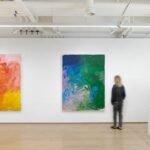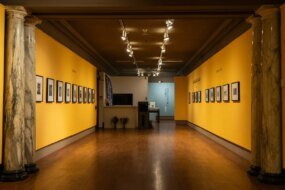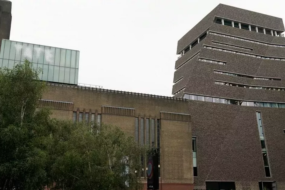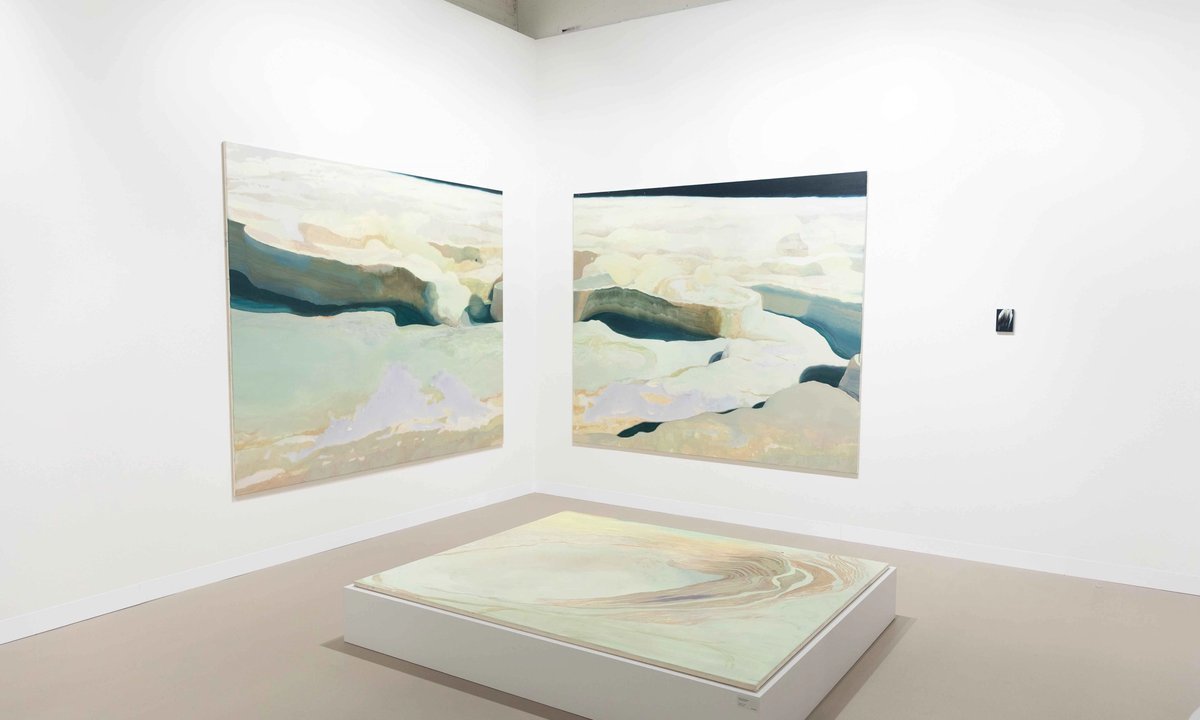
Amid soaring costs, softened sales and a saturated market, art fairs are increasingly under pressure to refine their offerings to their clients—the dealers. Art Basel is this year introducing a section called Premiere, which invites galleries to exhibit presentations of work made in the past five years by up to three artists, staged around a loose curatorial concept. The ten exhibitors in the inaugural section are typically smaller to mid-sized galleries presenting mid-career artists. Among the highest prices seen in this section are Lonnie Holley’s sculptures, brought by Edel Assanti, at $85,000.
Maike Cruse, the fair’s director, sees Premiere as the “sweet spot” that was previously lacking between Statements—for solo presentations of emerging artists’ works—and the main section. “Our job is to support galleries at all levels of the market, and Premiere is the response from conversations we have had with many of our exhibitors. We feel that this is what a certain size of gallery is really looking for.”
Certainly, mid-sized galleries are looking to mitigate the mounting costs of taking part in fairs. Priced at SFr22,000 for a 32 sq. m stand, Premiere is slightly cheaper than the main section, where the same sized stand is almost SFr26,000. It is also more than double the cost of Statements, SFr10,000 for 30 sq. m, which is typically the stepping stone for younger galleries to enter the fair, with many emerging spaces making their Art Basel debut there before eventually graduating to the main section.
Conceptually daring work
To be selected for Statements, stands must be ambitious and conceptually daring, and often feature less commercially viable mediums such as moving image, found objects and performance ephemera. This presents a financial risk: artists in this section often do not have established markets. It is certainly not unheard for a dealer to not sell a single work in Statements, and leave Basel out of pocket by as much as $20,000—a significant dent for a small gallery, which may have annual turnovers of less than $200,000.
“The ability to spread your risk is certainly a factor behind why we applied to Premiere,” says Lucas Casso, the founder of Sweetwater in Berlin. “Statements can be rewarding but challenging: you’re concentrating a lot of resources into an artist who is not established. Here we have more flexibility and we can present a fuller breadth of our programme.” His gallery is showing works by three artists—black-and-white prints of detritus by Megan Plunkett, glittering metallic sculptures by Kayode Ojo and aluminium flood barriers by Alexandre Khondji—with the works priced between €5,000 to €50,000.
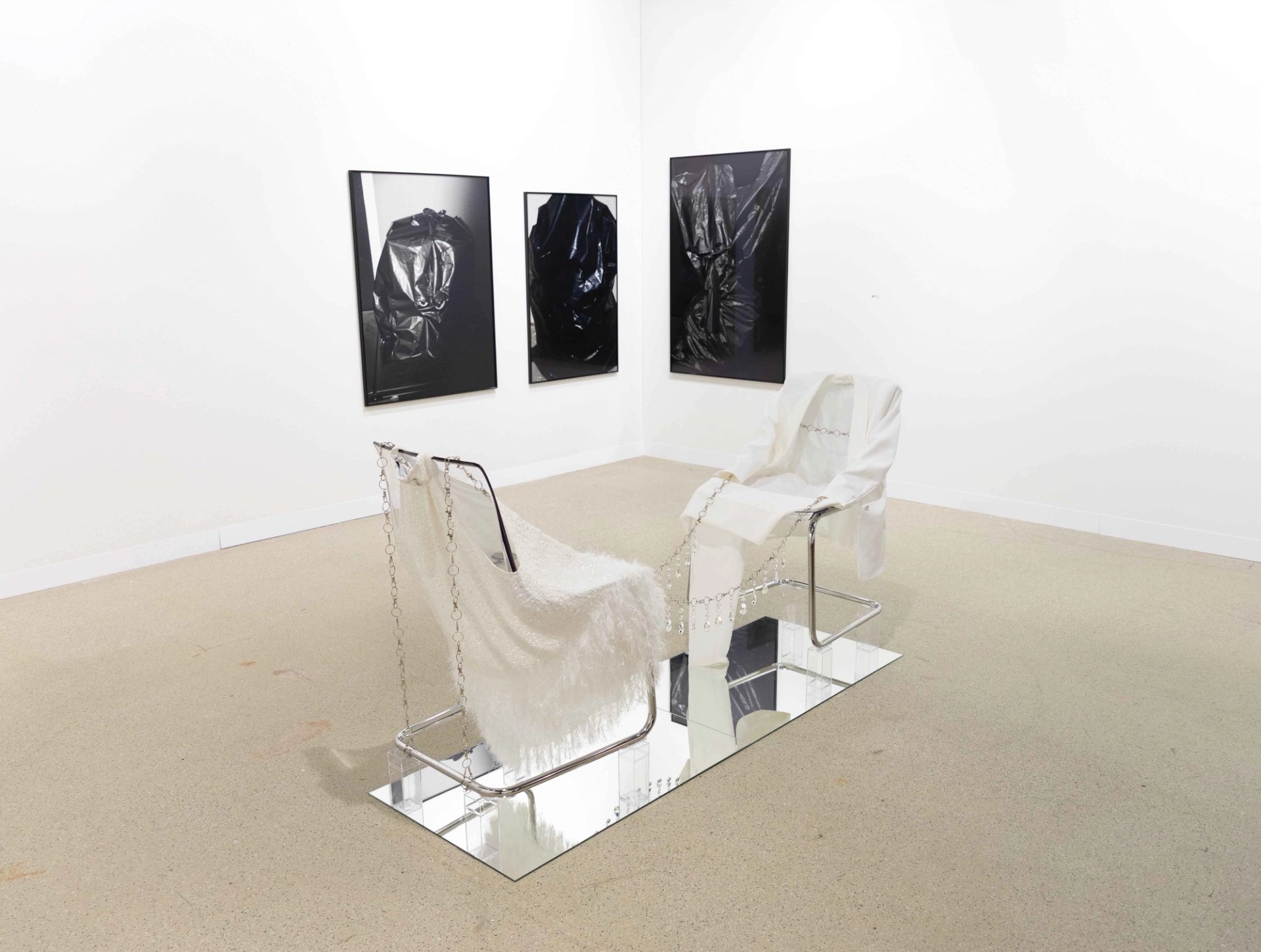
Works by Megan Plunkett (on wall) and Kayode Ojo at Sweetwater gallery’s stand David Owens
Curated stands can also offer the chance to craft compelling narratives to better contextualise work. This is something dealers repeatedly stress is necessary to capture the attention of discerning collectors, as the urgency that defined the appetite for contemporary art, particularly for work by less established artists, has vanished in recent years. Gypsum gallery from Cairo is showing two artists in dialogue at Premiere: paintings by the Swiss Greek artist Dimitra Charamandas depicting volcanic terrain, and photographs by the Egyptian-born, Basel-based artist Basim Magdy, also of volcanic debris. The artists, who are friends, “represent intergenerational concerns with environmental themes. By highlighting this intimate dialogue, we can shine new light on both their practices,” says Gypsum’s manager, Jamila Abdul-Razek.
For a gallery under the age of four to come to Art Basel, its booth should be special
A first impression is important Freddie Powell, Ginny on Frederick
For most galleries coming to Basel, the challenges of staging a compelling and commercially viable booth are a chief concern. The London dealer Rose Easton, who is showing a solo presentation of sculpture and jewellery by the Mexican artist Arlette at Liste, priced between £2,500 to £20,000, says that she is “mindful of rising costs and shifting purchasing decisions in today’s market” when deciding presentations.
For many, the allure of a growing number of alternative fairs and other satellite events is compelling. Basel Social Club, the sprawling and boisterous selling event now in its fourth edition, continues to draw not just crowds but galleries: participation fees range from €10,000 to free, depending on a gallery’s age. Meanwhile, the New York and Los Angeles-based gallery Clearing has decided to skip fairs this year entirely and instead is staging a vast group show in a villa near the Messeplatz that it has rented for a week.
Insecurity across the market
Maike Cruse acknowledges that “there is a lot of insecurity being felt across all sectors of the market right now”, but that “despite increased price sensitivity and less urgency, there is a still a lot of activity taking place at Art Basel”.
Indeed, fairs remain a perceived necessity for many galleries and a behemoth like Art Basel presents a surer bet than most. Rózsa Farkas, the founder of London’s Arcadia Missa, a first-time exhibitor in the main section this year, echoes the opinion of many gallerists when she says: “There is an over-saturation of fairs, so either interesting small and low-cost projects, or the most established fairs seem to make sense now. The fairs in the middle are riskier and riskier for galleries.” Arcadia Missa is bringing works by the artist duo Hannah Quinlan & Rosie Hastings, and the Turner Prize nominated Rene Matić, within a range of £10,000-£60,000.
The validation of taking part in Art Basel is also important for a young gallery. Ginny on Frederick from London is making its Statements debut with a presentation by Alexandra Metcalf. “For a gallery under the age of four to come to Art Basel, its booth should be special,” says the gallery’s founder, Freddie Powell. “A first impression here is important.” While Powell is aware of the financial gamble staging an ambitious stand represents, he adds that his path as a young dealer has at no stage been smooth. “I started the gallery in the ultimate crisis, that part of Covid when everyone had stopped buying art. Yes, every fair is a risk, but if my gallery can’t take risks now, when can we?”




